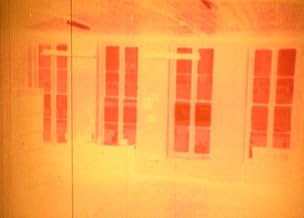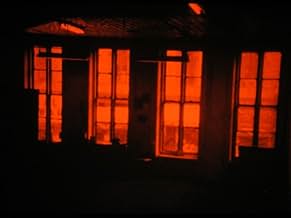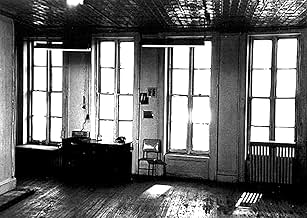Füge eine Handlung in deiner Sprache hinzuClaimed by some to be one of the most unconventional and experimental films ever made, Wavelength is a structural film of a 45-minute long zoom in on a window over a period of a week. Very u... Alles lesenClaimed by some to be one of the most unconventional and experimental films ever made, Wavelength is a structural film of a 45-minute long zoom in on a window over a period of a week. Very unconventional and experimental, indeed.Claimed by some to be one of the most unconventional and experimental films ever made, Wavelength is a structural film of a 45-minute long zoom in on a window over a period of a week. Very unconventional and experimental, indeed.
- Auszeichnungen
- 1 wins total
Empfohlene Bewertungen
Apparently the film is important in an artistic influence sense but I really think that whatever group appreciates this is not a group I will ever be able to join. I took nothing from it and wasn't able to find anything to really grasp onto as a starting point. Even in the context of having spent the morning in an art gallery trying to be open minded to things, I couldn't find space for this. I would love to sound intelligence and art-savvy but WVLNT really just seemed difficult and obscure for the sake of it.
Nothing could be further from the truth, though. Good art requires that meaning be contained within the text. Events take place; people say things -- those should be the very basic requirements for art. The tools of cinema -- editing, camera placement and movement, and so forth -- are important, but alone, don't cut it. A mere, 'cool' concept doesn't suffice. So skip the earth-shattering, condescending, pretension of Wavelength -- and its musical analogue in the "compositions" (I use that phrase lightly) of John Cage -- and instead look elsewhere, in films and works that seek to communicate real ideas about human experience. If you do feel a need to profess a real knowledge of "art," watch Bergman's "Wild Strawberries," or Fellini's "8 1/2." Heck, rent "E.T." for goodness sake. But please don't be fooled by by this junk.
Like Hollis Frampton's ZORNS LEMMA, WAVELENGTH is the kind of picture made to be written about, not really endured. The glowing descriptions of it in critics' prose are more provoking than the actual artifact itself. Two things remain striking and puzzling about it thirty-two years later. Why did Snow choose to make a near-hour-long demonstration of the zoom lens? Why would tracking have been any different--is the movie meant to be a statement on a subjective appearance of changed perspective, while the viewer really remains static? Or was Snow just infatuated with the gimmickry of the zoom? (Each calibration churning closer to the photograph has a home-movie clunkiness.)
The other is the oddly hippie-dippie tone of Snow's inserted gimcrackery. From the charwoman-looking extra playing "Strawberry Fields Forever" on a radio, then lumbering off like a bit player in an Ed Wood number, to the acid-flashback reruns of just-passed scenes, to the freak colorizations of arbitrary moments (as if we jumped to the POV of a UFO), the ambience is much more Big Brother and the Holding Company than Robert Bresson. It's the same playing-with-a-gizmo amateurism that mars the images using people in Stan Brakhage's DOG STAR MAN, and it makes Snow's academic astringency look like a pose.
(WAVELENGTH showed up again, ripped off in the unlikeliest place: the track into a photograph that forms the "Twilight Zone" epilogue to Kubrick's THE SHINING.)
Wusstest du schon
- WissenswertesMichael Snow has stated that his intent with the film was for it to be "a summation of my nervous system, religious inklings and aesthetic ideas."
- Zitate
Woman in fur coat: I just got here, and there's a man lying on the floor, and I think he's dead.
- VerbindungenEdited into WVLNT: Wavelength For Those Who Don't Have The Time (2003)
Top-Auswahl
Details
- Laufzeit45 Minuten
- Farbe
- Seitenverhältnis
- 1.37 : 1
Zu dieser Seite beitragen


















